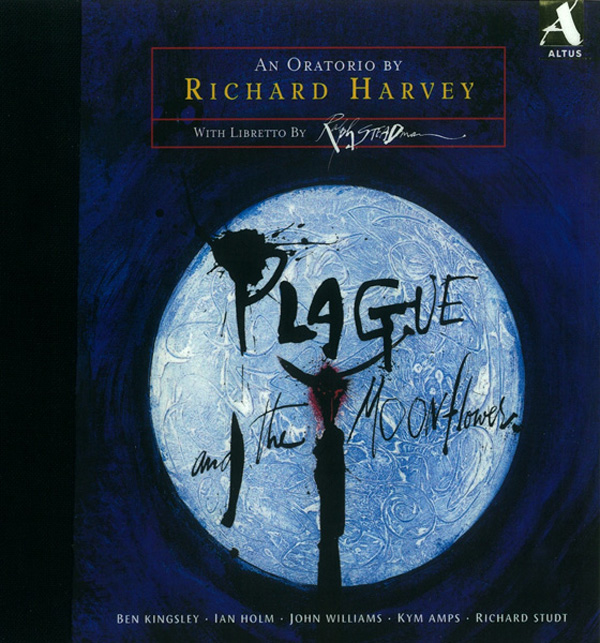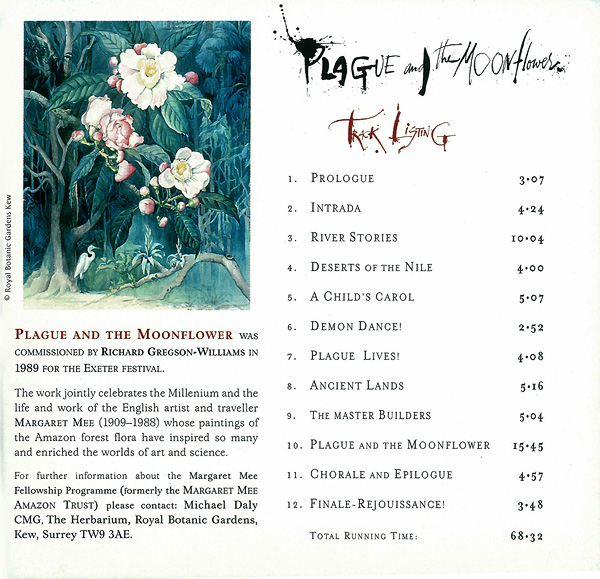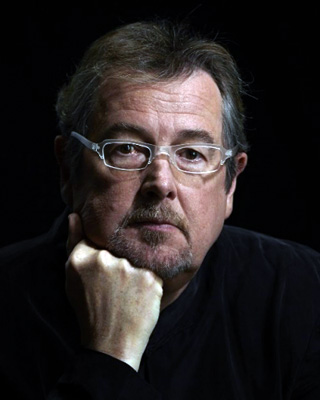wimpel69
01-18-2019, 03:16 PM
Request the FLAC links in this thread. Private messages will be ignored.
Album covers included. Limited sharing period.
Shroud for a Nightingale is a 1971 detective novel written by PD James in her Adam Dalgliesh series.
Chief Superintendent Adam Dalgliesh of Scotland Yard is called in to investigate the death of two student nurses
at the hospital nursing school of Nightingale House. The novel was adapted as a television miniseries by Anglia
Television and was produced for Britain's ITV network in 1984. It starred Roy Marsden as Adam Dalgliesh,
Joss Ackland as the surgeon, Stephen Courtney-Briggs, and Sheila Allen as Mary Taylor.


Music Composed and Conducted by
Richard Harvey
With
Ben Kingsley (narrator)
Ian Holm (narrator)
Kym Amps (soprano)
John Williams (classical guitar)
Eamonn O�Dwyre (treble voice)
Richard Studt (violin)
Roger Chase (viola)



"Richard Harvey is an English composer of enormous experience, especially in the fields of film and television music.
He wrote, for example, music for Tales of the Unexpected for ITV back in the 1970s, and more recently, for
The Da Vinci Code. He is also an immensely accomplished practical musician, proficient on a number of instruments,
and was a member for some years of the folk-rock band Gryphon.
Plague and the Moonflower dates from the late 1990s, and is best described as an �environmental cantata�. At the
start, the various musical forces, along with narrator Ben Kingsley, set the scene: our beautiful planet is beset by
man-made problems, personified by Ian Holm�s Plague Demon. This character softens and relents after coming into
contact with the rare and beautiful Moonflower, a plant found in Central and South America, and famous for flowering
at night and just once a year � an attribute that gives it an almost legendary quality.
This recording, made originally back in 1999, brings together an impressive array of musical and dramatic talent.
Ben Kingsley, Penelope Wilton and Ian Holm are all �household names� owing to their appearances on the small screen.
Guitarist John Williams and highly respected string players Richard Studt and Roger Chase are all big names in the
musical world. Then there are the three outstanding choirs, plus an orchestra made up of such stars as trumpeter
Maurice Murphy (now sadly deceased) and horn player Frank Lloyd.
There are parts, too, for more unusual instruments, such as mandolin, charango, zamponas (Pan flutes of the Andes),
and even an electric trumpet. All of these contribute to an exceptionally rich musical palette, which Harvey deploys
resourcefully in telling his story.
The key to the style of the music is really the composer�s background in the movies; not only in terms of the direct
appeal of the music with its powerful rhythms and attractive melodies, but also because of the way the sound has
been balanced and mixed. The outcome gives the whole thing a sonic depth which is impressive but which is also highly
artificial. This aspect took me a little getting used to. In the �classical� field, we�re used to recording producers doing
everything they can to make us forget they exist, to produce a sound which is that of an idealised concert-hall.
Richard Harvey and his engineers are not too concerned about that; instruments with important solos are projected
right into the foreground, while much effective use is made of �lontano� effects, as for example the mysterious distant
trumpet (an electric one?) in track 4, �Deserts of the Nile�.
What of the style of the music? To call it �eclectic� would be a prize understatement. Ralph Vaughan Williams, Steve Reich,
John Dowland, are just three of the names that come to mind. It�s also fair to say that if you liked �Riverdance�, or are a
fan of Karl Jenkins, you will probably find the music to your taste. This probably makes it sound like a horrendous mish-
mash, which it is not. This music is skilfully put together, tuneful and kaleidoscopically varied in its tone-colours.
I found it enjoyable, though, in the end, the story-line is trite and over-generalised, so that I found it hard to get truly
emotionally involved, despite the brilliance of all the contributors. It is always blindingly clear that a �point� is being made,
rather than a story being told, and therein lies its weakness. However, the whole enterprise remains a significant
achievement, and there�s no doubting the impact of elements such as the words of Margaret Mee � famous for her
wonderful paintings of the flowers of the Amazon forests � at the moment when the Plague Demon encounters the
Moonflower.
The text set by Richard Harvey is by Ralph Steadman, and one of the great attractions of this issue is the accompanying
booklet, which not only gives all the words but interleaves them with beautiful illustrations by Steadman � worth the
price of the disc in themselves."
Musicweb
Request the FLAC links in this thread. Private messages will be ignored.
Album covers included. Limited sharing period.
Please do not share further and add to my reputation when convenient.
Album covers included. Limited sharing period.
Shroud for a Nightingale is a 1971 detective novel written by PD James in her Adam Dalgliesh series.
Chief Superintendent Adam Dalgliesh of Scotland Yard is called in to investigate the death of two student nurses
at the hospital nursing school of Nightingale House. The novel was adapted as a television miniseries by Anglia
Television and was produced for Britain's ITV network in 1984. It starred Roy Marsden as Adam Dalgliesh,
Joss Ackland as the surgeon, Stephen Courtney-Briggs, and Sheila Allen as Mary Taylor.


Music Composed and Conducted by
Richard Harvey
With
Ben Kingsley (narrator)
Ian Holm (narrator)
Kym Amps (soprano)
John Williams (classical guitar)
Eamonn O�Dwyre (treble voice)
Richard Studt (violin)
Roger Chase (viola)



"Richard Harvey is an English composer of enormous experience, especially in the fields of film and television music.
He wrote, for example, music for Tales of the Unexpected for ITV back in the 1970s, and more recently, for
The Da Vinci Code. He is also an immensely accomplished practical musician, proficient on a number of instruments,
and was a member for some years of the folk-rock band Gryphon.
Plague and the Moonflower dates from the late 1990s, and is best described as an �environmental cantata�. At the
start, the various musical forces, along with narrator Ben Kingsley, set the scene: our beautiful planet is beset by
man-made problems, personified by Ian Holm�s Plague Demon. This character softens and relents after coming into
contact with the rare and beautiful Moonflower, a plant found in Central and South America, and famous for flowering
at night and just once a year � an attribute that gives it an almost legendary quality.
This recording, made originally back in 1999, brings together an impressive array of musical and dramatic talent.
Ben Kingsley, Penelope Wilton and Ian Holm are all �household names� owing to their appearances on the small screen.
Guitarist John Williams and highly respected string players Richard Studt and Roger Chase are all big names in the
musical world. Then there are the three outstanding choirs, plus an orchestra made up of such stars as trumpeter
Maurice Murphy (now sadly deceased) and horn player Frank Lloyd.
There are parts, too, for more unusual instruments, such as mandolin, charango, zamponas (Pan flutes of the Andes),
and even an electric trumpet. All of these contribute to an exceptionally rich musical palette, which Harvey deploys
resourcefully in telling his story.
The key to the style of the music is really the composer�s background in the movies; not only in terms of the direct
appeal of the music with its powerful rhythms and attractive melodies, but also because of the way the sound has
been balanced and mixed. The outcome gives the whole thing a sonic depth which is impressive but which is also highly
artificial. This aspect took me a little getting used to. In the �classical� field, we�re used to recording producers doing
everything they can to make us forget they exist, to produce a sound which is that of an idealised concert-hall.
Richard Harvey and his engineers are not too concerned about that; instruments with important solos are projected
right into the foreground, while much effective use is made of �lontano� effects, as for example the mysterious distant
trumpet (an electric one?) in track 4, �Deserts of the Nile�.
What of the style of the music? To call it �eclectic� would be a prize understatement. Ralph Vaughan Williams, Steve Reich,
John Dowland, are just three of the names that come to mind. It�s also fair to say that if you liked �Riverdance�, or are a
fan of Karl Jenkins, you will probably find the music to your taste. This probably makes it sound like a horrendous mish-
mash, which it is not. This music is skilfully put together, tuneful and kaleidoscopically varied in its tone-colours.
I found it enjoyable, though, in the end, the story-line is trite and over-generalised, so that I found it hard to get truly
emotionally involved, despite the brilliance of all the contributors. It is always blindingly clear that a �point� is being made,
rather than a story being told, and therein lies its weakness. However, the whole enterprise remains a significant
achievement, and there�s no doubting the impact of elements such as the words of Margaret Mee � famous for her
wonderful paintings of the flowers of the Amazon forests � at the moment when the Plague Demon encounters the
Moonflower.
The text set by Richard Harvey is by Ralph Steadman, and one of the great attractions of this issue is the accompanying
booklet, which not only gives all the words but interleaves them with beautiful illustrations by Steadman � worth the
price of the disc in themselves."
Musicweb
Request the FLAC links in this thread. Private messages will be ignored.
Album covers included. Limited sharing period.
Please do not share further and add to my reputation when convenient.